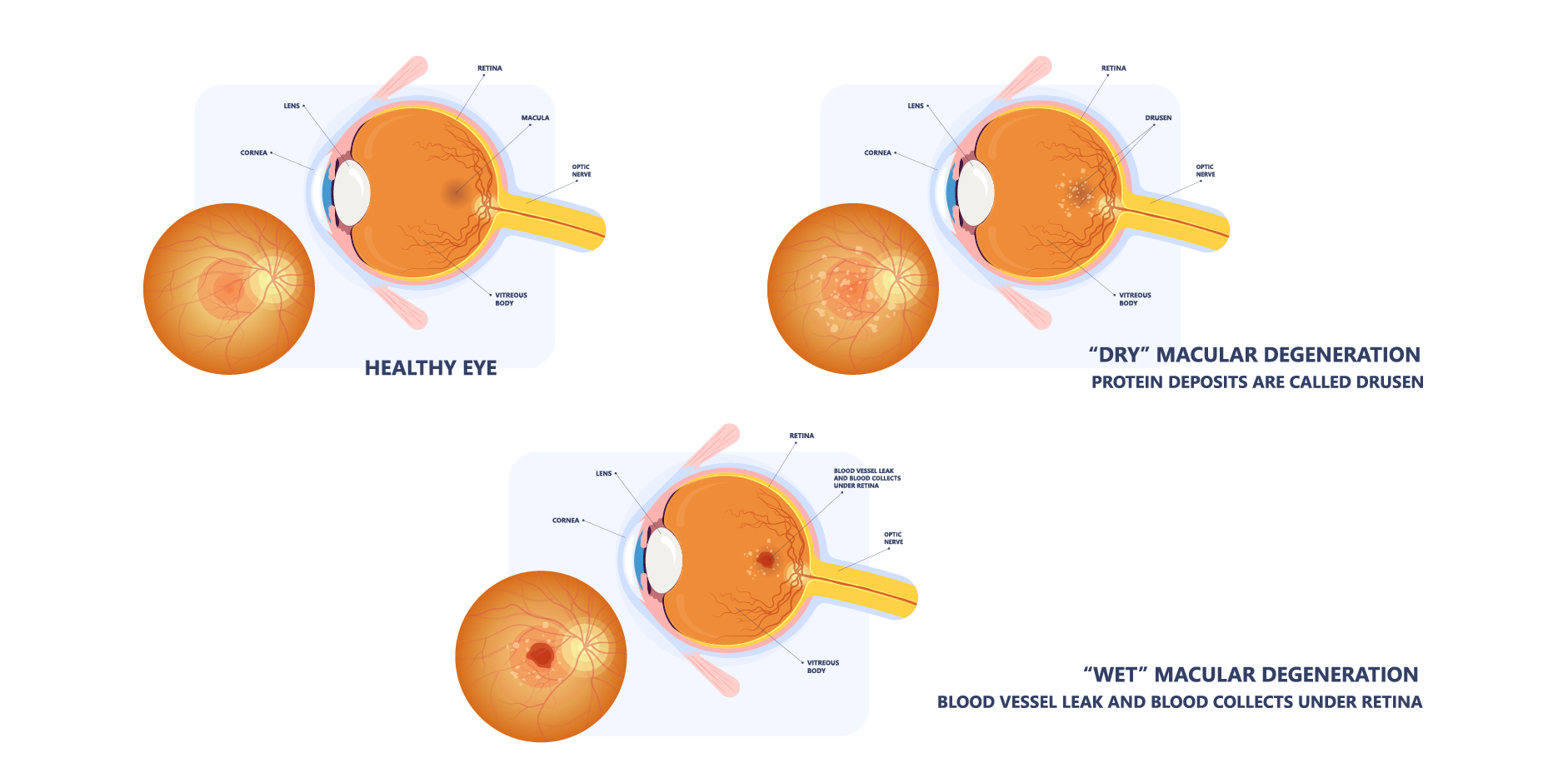Content on this page:
Content on this page:
Clinical Presentation
Decreased vision loss and distortion of seeing straight lines
(metamorphopsia) are the most common symptoms of age-related macular degeneration. The early stage manifestations of age-related macular degeneration
include decline of reading ability in dim light, glare difficulty, dark and
light adaptation difficulty (eg the patient wakes up at night and unable to
read the clock because of seeing a central dark patch in the visual field that
disappears within a few minutes as the eye adapts), the need to use magnifiers
and bright light to be able to see as well as the patient used to, and the
gradual progressive central vision loss. While the late-stage manifestations of
age-related macular degeneration include metamorphopsia or the patient
complains that straight line appearing crooked or wavy that can be confirmed by
using Amsler grid, difficulty in reading small sizes of print and then later
with larger print and/or words, and the profound and rapid central vision loss.
Non-Neovascular
or Non-Exudative or Early or Dry Age-Related Macular Degeneration
The clinical presentation of non-neovascular or non-exudative or early
or dry AMD is the presence of soft drusen ≥63 microns in diameter that causes
areas of hyperpigmentation in the outer retina or choroid, areas of
hypopigmentation of the RPE as a result of gradual breakdown of the RPE, and
photoreceptors has loss of function. Non-neovascular or non-exudative or
early or dry AMD is usually of ischemic cause.
Neovascular
or Exudative or Late or Wet Age-Related Macular Degeneration
Neovascular or exudative or late or wet AMD has the following clinical
presentation: Presence of CNV which is the perforation of the choriocapillaris
vessels and growth through the Bruch’s membrane and entry to the subretinal
pigment epithelium and/or subretinal spaces, serous and/or hemorrhagic
detachment of the sensory retina or RPE, presence of hard exudates in the
retina, fibrovascular proliferation in the subretina and sub-RPE, and the
presence of disciform scar. Neovascular or exudative or late or wet AMD is
usually due to the leakage of fluid from the blood vessels.
 Age-Related Macular Degeneration_Initial Assesment 2
Age-Related Macular Degeneration_Initial Assesment 2History
A thorough history in patients with macular degeneration includes ocular history especially the presence of precursor lesions, any family history of age-related macular degeneration, medical history including hypersensitivity reactions, social history especially smoking, and finally, medications and nutritional supplements.
Physical Examination
Ocular evaluation includes a dilated eye exam using a binocular
slit-lamp biomicroscopy which may reveal any of the following:
- Presence of drusens that appears as bright yellow spots or pale-yellow spots
- Presence of geographic atrophy that appears as sharply demarcated or defined scalloped edges of partial or complete depigmentation as a result of RPE atrophy
- Lesions indicating risk for progression to advanced AMD (eg large drusen, soft indistinct drusen, extensive drusen area, hyperpigmentation)
- Signs of exudative AMD like subretinal or sub-RPE neovascularization that appears as gray lesions, serous detachment of the neurosensory retina, RPE detachment, hemorrhages in the subretinal pigment epithelium, subretina, intraretinal or preretinal and breakthrough bleeding into the vitreous may occur, hard exudates within the macular area, epiretinal, intraretinal subretinal or sub-pigment epithelial scar or glial tissue or fibrin deposits, retinal angiomatous proliferations and retinochoroidal anastomosis
 Age-Related Macular Degeneration_Initial Assesment 3
Age-Related Macular Degeneration_Initial Assesment 3